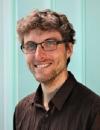Guillaume Blin
Lecturer in Stem Cell Biology

- Centre for Regenerative Medicine
- Institute for Regeneration and Repair
- Institute for Stem Cell Research
Contact details
- Tel: 0131 651 9500
- Email: Guillaume.Blin@ed.ac.uk
Address
- Street
-
Centre for Regenerative Medicine,
Institute for Regeneration and Repair,
The University of Edinburgh,
Edinburgh BioQuarter,
5 Little France Drive, - City
- Edinburgh
- Post code
- EH16 4UU
Background
- 2019 : Lecturer in Stem Cell Biology, MRC Centre for Regenerative Medicine, University of Edinburgh, UK.
- 2017-2019: Senior Research Associate, Lowell Lab, MRC Centre for Regenerative Medicine, University of Edinburgh, UK.
- 2012-2017: Sir Henry Wellcome post-doctoral fellow, Lowell Lab, MRC Centre for Regenerative Medicine, University of Edinburgh, UK.
- 2011 : PhD with Dr. Michel Puceat and Prof. Catherine Picart, Universite Montpellier II
- 2007: Msc in Biology, Control of cell fate, Universite Montpellier II
Undergraduate teaching
I have diverse teaching roles and responsibilities. I am a cohort lead for 2nd-year biology students. I am a course organiser for two core courses: the 2nd year mandatory course Systems and Regulations (SAR) and the 4th year honour course Patterning in Development. At the programme level, I design and mark synoptic exams, run field trips and design and deliver professional skill development activities including writing and computational modelling workshops.
Postgraduate teaching
I make several contributions to postgraduate courses including Origins of Synthetic Biology (Master course), Tissue Repair (MSc by research PhD programme) and iCM WT PhD programme.
Open to PhD supervision enquiries?
Yes
Current PhD students supervised
Miguel Robles-Garcia (PhD candidate)
Research summary
Quantitative Biology of Pattern Formation
Multicellular organisms are fascinating: they are complex, dynamic, adaptive and display exceptional levels of organisation, yet they come into existence from relatively simple setouts.
Our research aims to identify fundamental principles explaining how the cells self-organise to form tissues with complex architectures and functions. By acquiring a quantitative understanding of this question, we wish to advance our ability to engineer novel in vitro models of development and diseases and to inform future strategies for tissue regeneration and repair.
Specific aim and approach
To identify fundamental principles of cell fate patterning, we focus on the processes that generate the node, an anatomical landmark that emerges around week 2-3 of human development. The node is essential for the proper patterning of the embryo. The node and its immediate vicinity contain progenitor populations fated to form various structures of the body, including intervertebral discs, the spinal cord, bones and muscles of the trunk as well as the gut and some extrambryonic structures which support the development of the embryo.
The series of events that define the node are complex, transient and hidden from view since these events occur around week 2-3 of human development and are therefore impossible to observe in vivo for ethical reasons. To circumvent this issue, our lab has developed a simplified in vitro model using human pluripotent stem cells and microengineering. This self-organised system mimics the patterning of the cell fates in and around the node and is also easy to image, quantify and manipulate. Using this system, we aim to understand the molecular and cellular mechanisms that define the balanced proportion of cell fates in and around the node. We combine various quantitative approaches, including quantitative imaging, epigenomic and transcriptomic approaches as well as biophysical and computational modelling approaches to gain a systems understanding of cell fate patterning from the molecular to the multicellular level. We also collaborate with colleagues using animal models to validate our findings in an in vivo setting. Our most recent work uncovered how the spatiotemporal sequence of WNT and TGFbeta signalling combinatorially dictates the balance of embryonic precursors around the node allowing us to derive notochord progenitors, a clinically relevant population of cells fated to form intervertebral discs (Robles-Garcia et al 2024).
Knowledge exchange
Selected publications:
French et al. A toolkit for mapping cell identities in relation to neighbours reveals Notch-dependent heterogeneity within neuromesodermal progenitor populations. BiorXiv 2024
Robles-Garcia et al. In vitro modelling of anterior primitive streak patterning with hESC reveals the dynamic of WNT and NODAL signalling required to specify Notochord progenitors BiorXiv 2024
Blin G. Quantitative developmental biology in vitro using micropatterning, Development 2021, Development. 148, 15, 15 p., dev186387
Blin et al. Nessys: A new set of tools for the automated detection of nuclei within intact tissues and dense 3D cultures. PLoS Biology. 2019
Blin et al. Geometrical confinement controls the asymmetric patterning of Brachyury in cultures of pluripotent cells. Development 2018
Tools
We also generate tools and public datasets which we hope will benefit the broader community:
PickCells: Exploratory Image Analysis for Biology: https://pickcellslab.frama.io/docs/
GitLab projects: https://framagit.org/pickcellslab
Miguel Robles-Garcia (PhD candidate)
Olga Stepanova (MRC Transition postdoctoral fellow)
Chloe Thimonier (Post-doc)
BBSRC MRC Wellcome Trust
